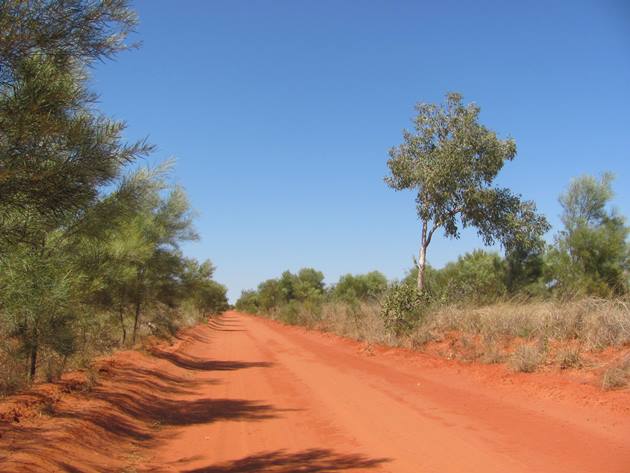
We have made a couple of trips down the sandy Dampier Downs Road now the native plants have started to flower prolifically in the desert country near Broome. It is always interesting to see the changes in the native vegetation over the winter months when there is no rain at all. Deriving down this sandy track is always rewarding and on no occasion have we come across any other vehicles. This is extremely beneficial to a birder, because you can just stop in the middle of the track as soon as you see something of interest! Whenever you encounter one bird species near the edge of the track it is worth stopping, because invariably there are several species in the vicinity.
Grey-crowned Babblers are usually in family groups of eight and are easily heard as you travel along the track. Willie Wagtails fly ahead teasing you to follow them and you always need your eyes on the sky overhead for raptors. As soon as you come close to flowering plants there are birds taking off all around you. There have been very large numbers of Masked Woodswallows recently and also Black-faced Woodswallows. and White-winged Trillers. The sky appears to be full of the birds feasting on the insects that surround the plants and the flowers are also beautiful to look at.
The native plants are often in groups due to the fact that they are mostly self-seeding and once you find a group of these trees or shrubs it is worth stopping to see what is feeding off the nectar. Grevillea refracta have been flowering for many weeks and the birds are attracted to them. It is a plant that we grow in our own garden to attract the birds. The Grevillea pyramidalis – Caustic Bush – have mostly finished flowering now, but they are also a beautiful tree that grows in the area.
Grevillea refracta-bird attracting
Grevillea pyramidalis-bird attracting
Travelling slowly along the road in recent weeks we have been able to add a few new birds to the 2018 year list and they include the Pied Honeyeater, Black Honeyeater and Varied Lorikeet. It was incredibly hard trying to photograph the birds feasting on the nectar, but for one brief moment a Pied Honeyeater landed in a distant tree without leaves! There were also numerous Brown Honeyeaters, Singing Honeyeaters, and Rainbow Bee-eaters close to the track and we also encountered a Pallid Cuckoo. There have been Crimson Chats on the track as well, but they appear to have dispersed now. Crested Pigeons and Diamond Doves flew across the track in search of water and there were also Zebra Finch and Long-tailed Finch. All of these species need water and will travel to nearby cattle troughs for water, because there is very little in the way of naturally occurring water in the area now.
Two distant Pied Honeyeaters
We noticed a Blue-winged Kookaburra sitting quietly in a tree and several Jacky Winters were observed along the track. Red-winged Parrots are often camouflaged until they fly across the track and there were several pairs along the track. The most colourful of plants is currently flowering along the track and this is the Northern Tinsel Flower. The plant is a mass of bright purple and is prolific along the sides of the track and would easily be overlooked if it was not flowering. The Northern Tinsel Flower did not appear to attract any birds, though.
Northern Tinsel Flower
Another huge plant that we had not encountered in flower before is the Velliia panduriformis – Cabbage Poison – and the specimen we found was almost two metres high. This was another plant species that did not appear to attract birds, but was spectacular never the less.
Velliia panduriformis
Along the track we noticed a variety of prints including birds, marsupials and more recently wild camels. The largest of the bird prints belonged to the Australian Bustard and we encountered one right against the track and I was able to take a photo through the car window without disturbing it.
Australian Bustard
Travelling slowly along the Dampier Downs Road at walking pace for approximately twenty kilometres can find you around forty bird species and each visit will be different. The road is not accessible all year round, but at this time of year it is an enjoyable drive for both observing the birds and the plants. You will need to be self-sufficient due to the fact that there is no phone reception for much of the track.

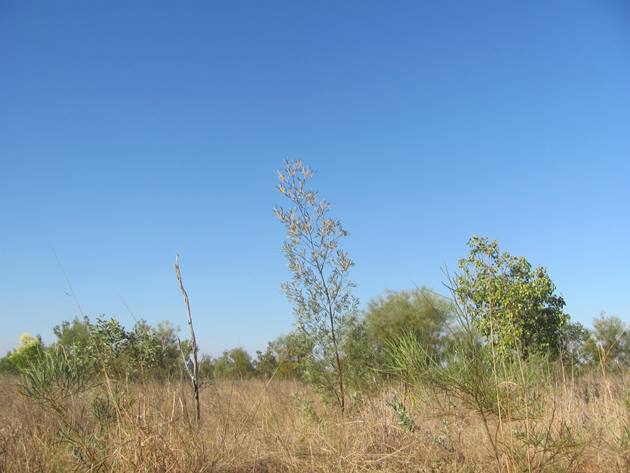
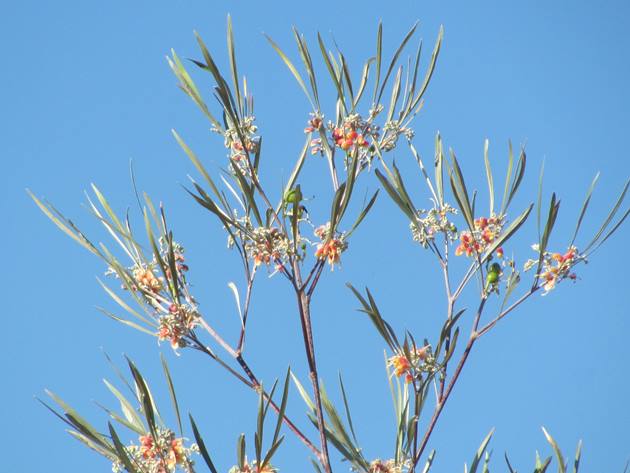
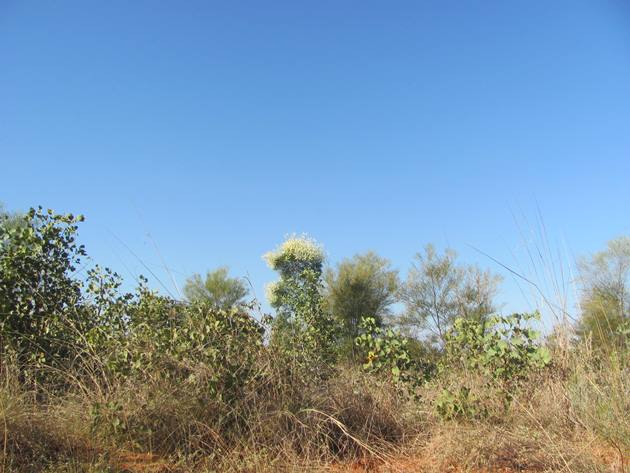
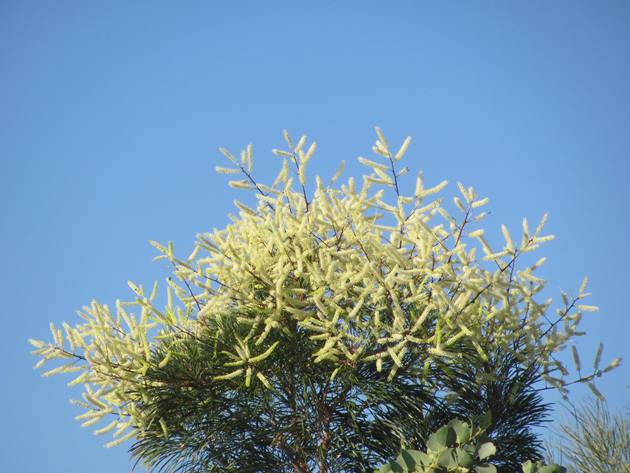
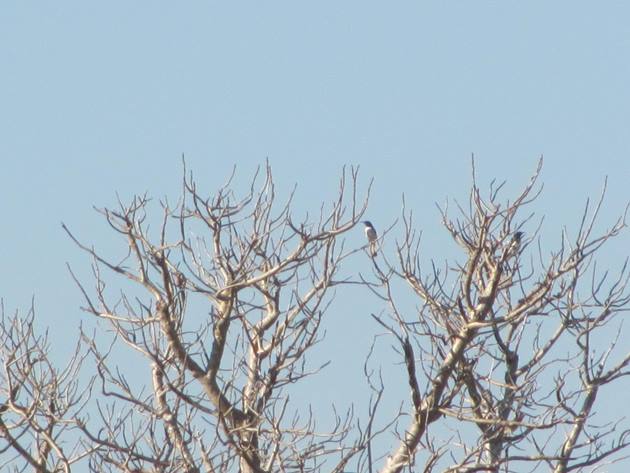
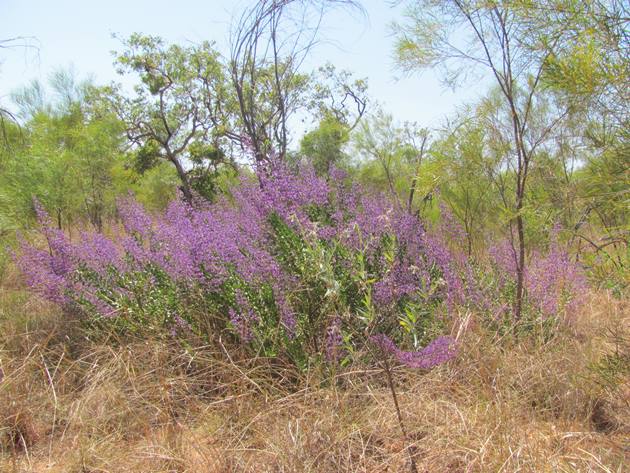
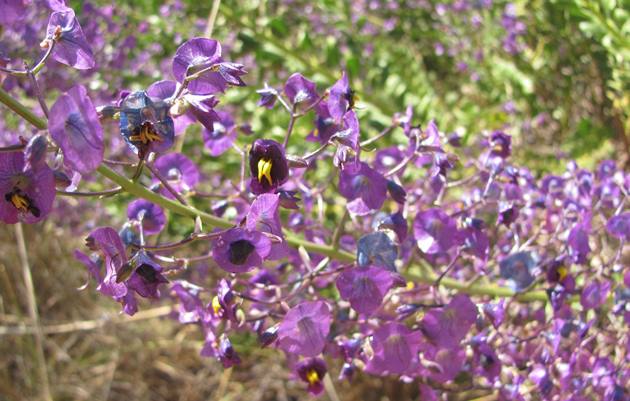
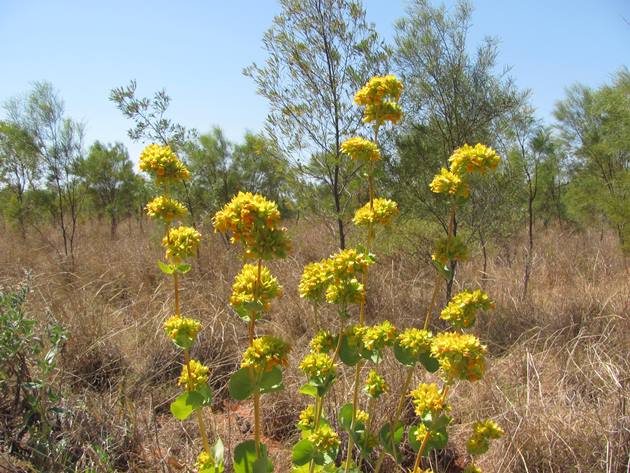
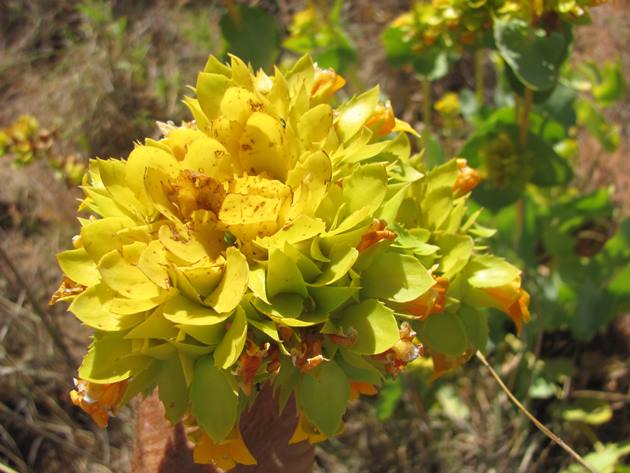
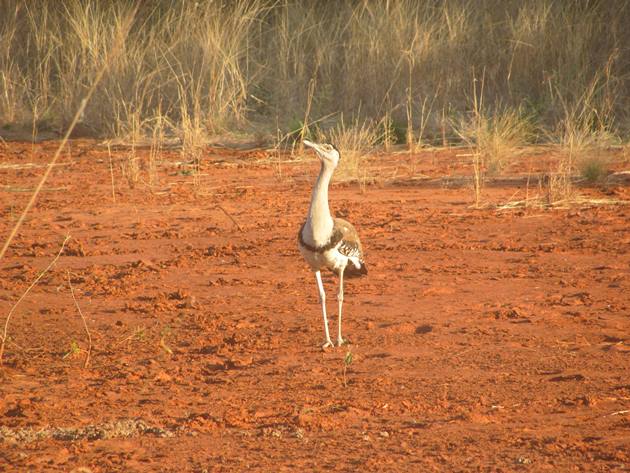










Leave a Comment